 I fear that this will be a bit of a scrambled post because I have multiple things on my mind, not to mention a whole bunch of links I want to mention. So in an attempt to force myself to be logical I'm going to give myself three keywords from the outset. Recession, illustration, and turducken. No really, those are my three.
I fear that this will be a bit of a scrambled post because I have multiple things on my mind, not to mention a whole bunch of links I want to mention. So in an attempt to force myself to be logical I'm going to give myself three keywords from the outset. Recession, illustration, and turducken. No really, those are my three.I haven't really done much gallery hopping of late because the 3-job life really doesn't leave a girl free during business hours. It appears that for the rest of December I will have one day off a week: Sunday. Which isn't an issue for big galleries like the NGV, but will get me nowhere where smaller, independent gallery are involved. I buy the Sunday age especially so that I can read the 'on-now' reviewey section, and then sigh deeply when I read that the opening hours are 12-5 Tue-Sat. As a result of all this, my art fixes have been restricted to an internet-only format, because bless the world wide web, it just never does close. This of course leads to some serious sleep deprivation for yours truly, but that is beside the point.
 So I have been skipping from blog to blog in my search for visual fulfilment, and whilst arty crafty type blogs offer cuteness and positivity, as far as serious art-world blogs are concerned, there is an awful lot more doom and gloom. The financial recession strikes fear into every art professional's heart, with layoffs of gallery staff, low sales at auction, and, in a more extreme case, Los Angeles' MOCA (Museum of Contemporary Art) has publicly admitted that it is facing a financial crisis of its own (sorry that these are all American examples. I have searched and scoured for more local examples of the world economic crisis's effect on the art world, with the sole result being the news that the Melbourne-based artist-run-initiative Kings ARI is faced with the possibility of having to close down because the rent for its gallery has gone up considerably. But this is really more related to a shitty landlord than it is to economic downturn). The best article I came across is hardly the most recent. Alexandra Peers' The Fine Art of Surviving the Crash in Auction Prices for the Wall Street Journal is a detailed and considered look at the way the art market crash affects all major players: the auctioneers, the dealers, the artists and the collectors. It is not blindly optimistic, nor is it panicked, and I like Peers' overall conclusion that while a period of recession can be difficult to adjust to, it nonetheless brings with it the possibility of positives that would not be realised when the market is booming.
So I have been skipping from blog to blog in my search for visual fulfilment, and whilst arty crafty type blogs offer cuteness and positivity, as far as serious art-world blogs are concerned, there is an awful lot more doom and gloom. The financial recession strikes fear into every art professional's heart, with layoffs of gallery staff, low sales at auction, and, in a more extreme case, Los Angeles' MOCA (Museum of Contemporary Art) has publicly admitted that it is facing a financial crisis of its own (sorry that these are all American examples. I have searched and scoured for more local examples of the world economic crisis's effect on the art world, with the sole result being the news that the Melbourne-based artist-run-initiative Kings ARI is faced with the possibility of having to close down because the rent for its gallery has gone up considerably. But this is really more related to a shitty landlord than it is to economic downturn). The best article I came across is hardly the most recent. Alexandra Peers' The Fine Art of Surviving the Crash in Auction Prices for the Wall Street Journal is a detailed and considered look at the way the art market crash affects all major players: the auctioneers, the dealers, the artists and the collectors. It is not blindly optimistic, nor is it panicked, and I like Peers' overall conclusion that while a period of recession can be difficult to adjust to, it nonetheless brings with it the possibility of positives that would not be realised when the market is booming. And of course, you can't read journalistic coverage of the art world without Damien Hirst's name coming up at some point. Clever though he may be, he kind of reminds me of that band you once liked that is now playing in every single shop you walk into: in other words, he's everywhere, dammit. Back in September, before the art world really felt the bite of economic downturn, Hirst set a new precedent by holding a direct-to-public auction of new works at Sotheby's. Several things about the auction-exhibition -- for that is what it was -- entitled Beautiful in my Head, stand out. The direct engagement of an artist with an auction house is somewhat unprecedented - the veneer of creative genius can be very easily damaged if an artist is perceived to be too interested in money. However in the context of Hirst's career to date, this interaction with the commercial side of the art world is not so surprising. If anything, he has made his name by being controversial, and for appearing to care more about money than art. Whether or not this is true is inconsequential -- it is still what people think of when Hirst is mentioned: money and controversy. The Sotheby's sale was no exception. Two expat Australian critics, Robert Hughes and Germaine Greer got their tits in a tangle over Mr Hirst and his 'clearance sale'/auction. Hughes (coiner of the 'clearance sale' tag) says that Hirst is functioning as a commercial brand rather than an artist, and that furthermore, his work has been stripped of any meaning beyond its pricetag. Greer counters that whilst she would have liked to see Hughes take on Hirst (too many H's...), her fellow critic "[wasn't] able to lay a glove on his quarry." As far as she is concerned, Hughes is stuck in the past, and has simply failed to move with the times. Damien Hirst functioning as a brand is, in fact, acceptable, because "the art form of the 21st century is marketing..." and, moreover, "To develop so strong a brand on so conspicuously threadbare a rationale is hugely creative - revolutionary even."
And of course, you can't read journalistic coverage of the art world without Damien Hirst's name coming up at some point. Clever though he may be, he kind of reminds me of that band you once liked that is now playing in every single shop you walk into: in other words, he's everywhere, dammit. Back in September, before the art world really felt the bite of economic downturn, Hirst set a new precedent by holding a direct-to-public auction of new works at Sotheby's. Several things about the auction-exhibition -- for that is what it was -- entitled Beautiful in my Head, stand out. The direct engagement of an artist with an auction house is somewhat unprecedented - the veneer of creative genius can be very easily damaged if an artist is perceived to be too interested in money. However in the context of Hirst's career to date, this interaction with the commercial side of the art world is not so surprising. If anything, he has made his name by being controversial, and for appearing to care more about money than art. Whether or not this is true is inconsequential -- it is still what people think of when Hirst is mentioned: money and controversy. The Sotheby's sale was no exception. Two expat Australian critics, Robert Hughes and Germaine Greer got their tits in a tangle over Mr Hirst and his 'clearance sale'/auction. Hughes (coiner of the 'clearance sale' tag) says that Hirst is functioning as a commercial brand rather than an artist, and that furthermore, his work has been stripped of any meaning beyond its pricetag. Greer counters that whilst she would have liked to see Hughes take on Hirst (too many H's...), her fellow critic "[wasn't] able to lay a glove on his quarry." As far as she is concerned, Hughes is stuck in the past, and has simply failed to move with the times. Damien Hirst functioning as a brand is, in fact, acceptable, because "the art form of the 21st century is marketing..." and, moreover, "To develop so strong a brand on so conspicuously threadbare a rationale is hugely creative - revolutionary even." To be honest, I have let myself get off-topic -- the auction itself is not the point of this story at all, but it is a problem to which I am still unable to formulate a concrete answer, and it continues to fascinate me, as I struggle to work out which side of the fence I fall on. Basically the entire tale of the Auction-with-a-capital-A is a preamble to the fact that Hirst, whose works command prices that boggle the imagination, is still not immune from the financial crisis: the faceless assistants who complete many of Hirst's works (oh, you thought the high price tag was because the artist slaved away all by himself? think again) have faced job cuts. Even Damien Hirst has to "be mindful of the current economic climate." If I sound cynical, it's because I am. Fence sitter or no, Damien Hirst and cynicism tend to go hand in hand.
On a more positive note, also while is was flitting back and forth through the web, I came across a link to the blog of New York based illustrator Christoph Niemann. In this blog, created for the New York Times, Nieman creates a series of illustrations upon a theme each month. December, for example, is "Coffee," with each illustration taking a coffee stained napkin as its point of departure. Now in words, that sounds pretty lame, but just check out the pictures:


 Even cooler than the Coffee pictures is Niemann's series detailing his sons' love of the New York subway. For the seriously curious/bored, you can find Niemann's own website and portfolio here. I like that Niemann's work manages to be both simple and visually arresting, and that he maintains a certain childlike charm throughout his NYT blogs. Heck, I just think he's a nice guy, even if it does seem odd to be making judgements on someone's character based on their drawings.
Even cooler than the Coffee pictures is Niemann's series detailing his sons' love of the New York subway. For the seriously curious/bored, you can find Niemann's own website and portfolio here. I like that Niemann's work manages to be both simple and visually arresting, and that he maintains a certain childlike charm throughout his NYT blogs. Heck, I just think he's a nice guy, even if it does seem odd to be making judgements on someone's character based on their drawings.Lastly, for something completely unrelated. Being a word nerd as well as an art nerd, I often fixate on weird sounding words. For no reason that I can explain, other than they sound funny, and once they are stuck in my head, they stay there for a good week or so, making me giggle at random intervals. Word of the moment, has been alluded to at the beginning of this post (and yes, I know I am about a month late for thanksgiving): TURDUCKEN. Even if you are not a nerd like I am, surely you must admit how absurd it sounds. Now, I know what a Turducken is. It is an American specialty; a turkey, stuffed with a duck, which is in turn stuffed with a chicken. Yet I had a hard time imagining what the final product would look like. Curiosity piqued and word firmly in my head, I decided to investigate.
Presenting "How to make a Turducken"
NB: vegetarians and bird-fans, look away. This video consists of a whole lotta dead fowl!
And...here's one we prepared earlier. The finished product (plus some very excited Americans)
Interestingly, in about August, the word stuck in my head was Tofurkey. So maybe I just have a turkey fixation. Who knows? I am now sure my few readers think I am insane, so I'd better end the turkey/tofurkey/turducken line of enquiry as soon as possible. Until next time, when I promise to be more succinct, and less poultry-based.
+of+DSCN2645-pola.jpg)





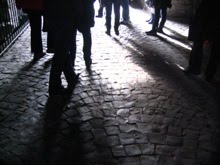



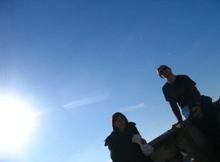







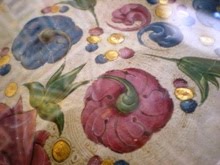


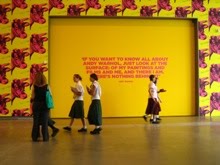.jpg)

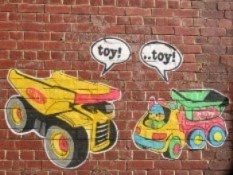
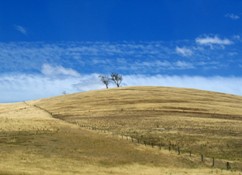





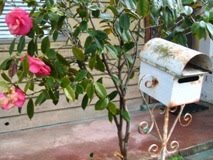





No comments:
Post a Comment